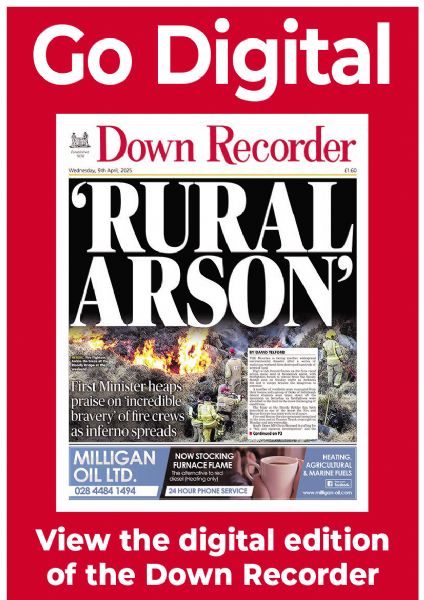Lung cancer fears over gas seeping into homes
Lung cancer fears over gas seeping into homes
26 August 2015
HOUSEHOLDS in Mourne and Lecale are being urged to test for radon gas after the publication of a new map highlighting at-risk areas.
Radon is a naturally occurring radioactive gas that seeps into homes from the ground. Long term exposure can lead to cancer and it is estimated that every year there are about 1,000 radon linked lung cancer deaths in the UK.
The Mournes has long been known to be a hot-spot for radon with over 30 per cent of home likely to be affected by the gas.
However, the new map also shows that large parts of Lecale are also affected, particularly the area from Downpatrick to Strangford and Killough. Between 10 and 30 per cent of homes in this area are affected by the gas.
Neil McColl, Head of Radon at Public Health England’s Centre for Radiation, Chemical and Environmental Hazards, said around 155,000 homes, about one in five in Northern Ireland, are now in ‘Affected Areas.’
“These are places where some householders are exposed to radon at a level where we recommend protective action,” said Mr McColl.
“This is an increase on the last estimate we made of the total number of Northern Ireland homes at risk. Of course few will have radon at a level that requires attention, but there will be some.
“There are definite health risks from radon, particularly if you’re a smoker or an ex-smoker, so we want people to take this seriously and think, especially if they’re in an affected area, about what steps they should take.”
The last radon map of Northern Ireland, published in 2009, identified about 90,000 homes being at risk from higher levels of radon. The new map combines thousands of radon measurements with detailed geological information to produce a more accurate map.
Mr Mark Cooper, Chief Geologist for Northern Ireland at the Geological Survey of Northern Ireland said: “The arrangement of geology across Northern Ireland is such that rock types that are more prone to radon production, such as granite, limestone and mudstone, occur mainly in the southeast and west.”
Dr Gerry Waldron, a consultant in health protection at the Public Health Agency said people won’t know if their homes have a high level of radon unless the test.
“So we’re urging people to have a look at the new map, find if their home is in an affected area and if so get a test. Testing is easy, it is not intrusive and there are plenty of websites online where you can order a radon test,” he said.
“It’s not only homes where radon is an issue. Although we all get our greatest exposure at home, because it’s where we spend most of our time, employers have responsibilities under health and safety laws to protect their staff. So it’s important they look at the new maps too so they can see if their workplace is at risk.
For more information about the practical measures that can reduce radon exposure visit www.ukradon.org.


